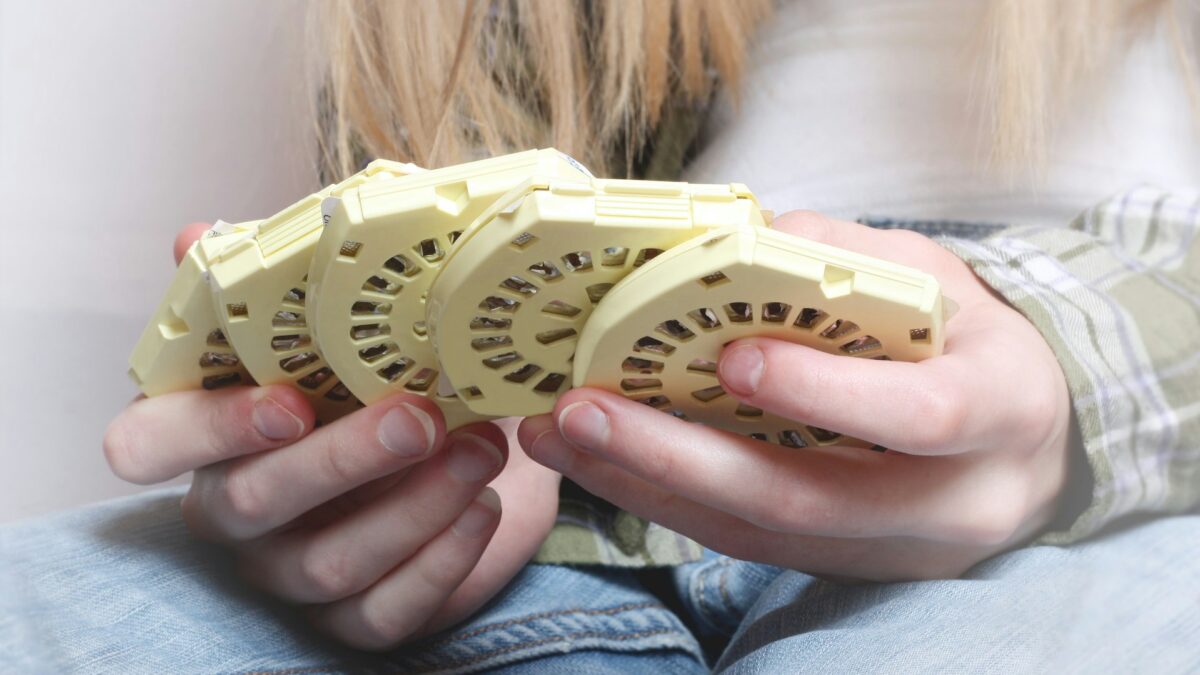
Six-year-old James is caught in a gender identity nightmare. Under his mom’s care in Dallas, Texas, James obediently lives as a trans girl named “Luna.” But given the choice when he’s with dad, he’s all boy — his sex at birth.
In their divorce proceedings, the mother has charged the father with child abuse for not affirming James as transgender, has sought restraining orders against him, and is seeking to terminate his parental rights. She is also seeking to require him to pay for the child’s visits to a transgender-affirming therapist and transgender medical alterations, which may include hormonal sterilization starting at age eight.
I learned of James’ plight on a recent visit to Plano, Texas, where I spoke to teenagers about my own transgender story. I lived through a similar scenario when I was his age. I was cross-dressed for two-and-a-half years by my grandmother, who made a purple chiffon dress for me. Somewhat like James, my cross-dressing occurred under one adult’s care, but away from grandma’s I was all boy with my mom and dad. Also, just like James, I found my way into the office of a gender therapist, who quickly started me toward transition.
When his mother, a pediatrician, took James for counseling, she chose a gender transition therapist who diagnosed him with gender dysphoria, a mental conflict between physical sex and perceived gender. James’ precious young life hinges purely on the diagnosis of gender dysphoria by a therapist who wraps herself in rainbow colors, affirms the diagnosis of gender dysphoria, and dismisses evidence to the contrary. Remove the “rainbow” from James’ diagnosis, and it crumbles under the weight of the criteria for the diagnosis of gender dysphoria.
The diagnosis is critical, because labeling a child with gender dysphoria can trigger a series of physical and mental consequences for the child and has legal ramifications in the ongoing custody case. Get it wrong and young James’s life is irrevocably harmed.
James Does Not Fit the Gender Dysphoria Criteria
The criteria for a diagnosis of childhood gender dysphoria are that a child be persistent, consistent, and insistent about being the opposite sex. James’s mom is “all in” on the diagnosis of gender dysphoria and assisting with social transition. She used the name Luna to enroll him as a girl in first grade, and provides only female clothes.
Meanwhile, Dad isn’t seeing signs of gender dysphoria. In the father’s home, James appears to be a normal boy and doesn’t identify as a girl. He has a choice of boy’s or girl’s clothes there, and he chooses to dress as a boy. The fact that James changes gender identity depending on which parent is present makes the diagnosis of gender dysphoria both dubious and harmful.
The transition therapist has observed that James is not consistent, insistent, or persistent in the desire to become “Luna.” For example, a dossier filed with the Dallas court says that, under the skilled eyes of the therapist, the child was presented two pieces of paper, one with the word “James” and one with the word “Luna,” and asked to pick the name he preferred. When the appointment only included his mother, James selected Luna, the name and gender he uses at his mother’s home and in his first-grade classroom. When the appointment was only with his father, however, James pointed to the boy name James, not the girl name.
The glaring disparity between a child’s preferred identity when in the presence of one parent versus the other should cause a therapist to reassess, perhaps nullify the diagnosis of gender dysphoria, and terminate any steps toward transition. But in the case of James, this hasn’t happened.
Using a Little Boy as a Weapon of War
When James is away from his mother, he consistently rejects the idea that he is “Luna girl” or that he wants to be a girl. Because the court prohibits dad from dressing James as a boy or from teaching him that he is a boy by sharing religious or science-based teachings on sexuality, dad presents James with male and female clothing options and James always chooses, even insists on, his boy clothes. Dad told me, “James violently refuses to wear girl’s clothes at my home.” This is not a sign of gender dysphoria.
Eyewitness accounts from friends corroborate dad’s observations of James preferring to be a boy. Bill Lovell, the senior pastor of Christ Church Carrollton, wrote: “Based on the three occasions I’ve spent time with him, I’d say he acts and looks unmistakably like a healthy six-year-old boy. … I am praying for James, an average six-year-old boy, a sweet-natured, intelligent, lovable and at this point particularly vulnerable young man, caught up in a titanic clash of worldviews.”
Ellen Grigsby shared in an email her observations after meeting James and his fraternal twin brother for the first time: “They were both ‘all boy’ and were having a great time. Both boys were absolutely dressed as boys and behaving as boys.”
Sarah Scott is a family friend and mother of three boys who frequently play with James and his brother. She and her husband are sensitive to allowing James to lead the way in gender choices such as names, pronouns, and clothing. I asked her the obvious question: “How do you know James does not want to be a girl?” Sarah responded in an email with several examples she’s seen of James’ desire to remain a boy:
Friday, Sept. 21: We had the boys over. The boys took turns telling stories and James made up a story about five little boys (himself, his brother and my three sons) who were such good friends that they magically turned into pumpkins, so they could stay in the pumpkin patch together forever. He didn’t say kids. He specifically and happily referred to himself as a boy.
Saturday, Oct. 20: We all went on a walk to the park. We had such fun! It had rained the night before. On the walk, James slipped and got his clothes dirty. He asked if he could borrow some of my boys’ shorts and if I could wash his clothes. I said sure! — and went to grab something he could wear. While I was looking, he said, ‘Guess what Mrs. Sarah? You don’t need to find a shirt because boys don’t have to wear them if you’re hot!’ I laughed and told him I guess that’s a good thing about being a boy! He said, ‘Yes, it is!’
Saturday, Nov. 3: His mother came to pick up the boys to take them to [his brother’s] soccer game. James hugged his dad and said, ‘Love you.’ He refused to go to the soccer game as a girl with mom and stayed with dad. That evening they came to our house.
James exhibits no desire to be “Luna” the girl except when he is with his mother. The boy’s behavior offers a stinging rebuke of the diagnosis of gender dysphoria. This by all accounts is not a true or clinically correct diagnosis of gender dysphoria. Yet the therapist stands by her diagnosis and continues to keep “Luna” on track to gender transition.
Is This Therapy or Manipulation?
Unlike James, I was an adult at the time of my diagnosis. Grandma was gone by then, but the therapist, like so many today, affirmed my cross-gender identity and guided me through gender transition. He provided access to hormones and surgery and I soon had the full gender-affirming surgery and identified as “Laura.” I felt that my gender identity and biological sex were at odds, but what the therapist failed to consider were the other factors driving my desire to change gender, which needed to be addressed first.
What this mom is doing to James looks very much like what my grandmother did to me by affirming me in the purple dress. My grandmother didn’t intend to harm me, but her actions destroyed my childhood and my family and consumed nearly 50 years of my life.
James has no idea what he is in for or how his gender journey will play out, but with an incorrect diagnosis it will be ugly. I became very concerned about James because he is not exhibiting the diagnostic attributes of gender dysphoria. His gender preferences are not consistent or insistent, but flip back and forth, according to which parent is present.
When James is permitted to relax around friends away from his mom, he seems natural and happy being a boy. If James truly had gender dysphoria, he would demand the proper pronouns, always dress as a girl and insistently, persistently, and consistently claim to be a girl in all situations, not just with mom. Instead, friends say he has done the opposite — he has insisted on being a boy. It is time to consider that the boy is not transgender.
Misdiagnosing People Has Horrific Consequences
Misdiagnosis of gender dysphoria happens around the world, and people’s lives are harmed when it does. I wanted people to see what I see, that people of all ages have been incorrectly diagnosed with gender dysphoria, so I wrote a book, “Trans Life Survivors,” that shares many first-hand stories of misdiagnosis of gender dysphoria and the heart-breaking results.
Therapists are taking notice, too, of the increasing prevalence of people detransitioning and going back their birth sex, and suggesting a need for comprehensive psychological assessments, rather than fast-tracking children to transition. An article in The Atlantic shares interviews with Scott Leibowitz, a psychiatrist who treats children and adolescents in Columbus, Ohio, and Laura Edwards-Leeper, a psychologist at Pacific University and Oregon’s Transgender Clinic. Both believe as Edwards-Leeper shares, “that comprehensive assessments are crucial to achieving good outcomes for TGNC [transgender and gender non-conforming] young people, especially those seeking physical interventions, in part because some kids who think they are trans at one point in time will not feel that way later on.”
Pediatrician Michelle Cretella, executive director of the American College of Pediatricians, describes the pediatric community’s encouragement of sex change and hormonal treatments for children as “institutionalized child abuse.”
If we do not save James from a misdiagnosis, his next step is chemical castration at age eight, only two years away. James needs a more comprehensive psychological assessment to explore why he identifies as a girl with mom and as a boy with dad. I want to do what I can to “Save James” from his gender nightmare, and to raise awareness about how easily children can be misdiagnosed and labeled as gender dysphoric and the extensive damage that can cause in their young lives.
A questionable diagnosis locks a vulnerable child into an alternate gender identity long before they can understand what is happening or where it might lead. It’s up to the adults to observe the child carefully, consider and question the grey areas, and ultimately guard innocent children against hasty diagnoses and conclusions about something so fundamental as their gender identity.









